Viability Assessment of Small-Scale On-Grid Wind Energy Generator for Households in Malaysia
Abstract
1. Introduction
2. Wind Speed Data and Electrical Load Estimation
2.1. Wind Speed Data
2.2. Electrical Load Profile
2.3. Software Tool for Feasibility Study
3. Economic Modeling and Project Lifecycle
4. Case Study
- FH-5000, FLTXNY
- RX-20KH3, R&X Energy
- WES80, Wind Energy Solutions
5. Results
5.1. Kudat Case
5.2. Putrajaya Case
6. Discussion
7. Conclusions
Author Contributions
Funding
Institutional Review Board Statement
Informed Consent Statement
Data Availability Statement
Acknowledgments
Conflicts of Interest
References
- Gielen, D.; Boshell, F.; Saygin, D.; Bazilian, M.D.; Wagner, N.; Gorini, R. The role of renewable energy in the global energy transformation. Energy Strategy Rev. 2019, 24, 38–50. [Google Scholar] [CrossRef]
- IEA. Renewables Information: Overview. 2020. Available online: https://www.iea.org/reports/renewables-information-overview (accessed on 24 February 2021).
- Liu, X.; Zhang, S.; Bae, J. Renewable energy, trade, and economic growth in the Asia-Pacific region. Energy Sources Part B Econ. Plan. Policy 2018, 13, 96–102. [Google Scholar] [CrossRef]
- Noman, F.M.; Alkawsi, G.A.; Abbas, D.; Alkahtani, A.A.; Tiong, S.K.; Ekanayake, J. Comprehensive Review of Wind Energy in Malaysia: Past, Present, and Future Research Trends. IEEE Access 2020, 8, 124526–124543. [Google Scholar] [CrossRef]
- Abdullah, W.S.W.; Osman, M.; Kadir, A.; Abidin, M.Z.; Verayiah, R. The Potential and Status of Renewable Energy Development in Malaysia. Energies 2019, 12, 2437. [Google Scholar] [CrossRef]
- Haseeb, M.; Abidin, I.S.Z.; Hye, Q.M.A.; Hartani, N.H. The impact of renewable energy on economic well-being of Malaysia: Fresh evidence from auto regressive distributed lag bound testing approach. Int. J. Energy Econ. Policy 2019, 9, 269. [Google Scholar]
- Masseran, N.; Razali, A.M.; Ibrahim, K.; Wan Zin, W.Z. Evaluating the wind speed persistence for several wind stations in Peninsular Malaysia. Energy 2012, 37, 649–656. [Google Scholar] [CrossRef]
- Albani, A.; Ibrahim, M. Wind energy potential and power law indexes assessment for selected near-coastal sites in Malaysia. Energies 2017, 10, 307. [Google Scholar] [CrossRef]
- Ibrahim, M.Z.; Albani, A. The potential of wind energy in Malaysian renewable energy policy: Case study in Kudat, Sabah. Energy Environ. 2014, 25, 881–898. [Google Scholar] [CrossRef]
- Albani, A.; Ibrahim, M.Z.; Taib, C.M.I.C.; Azlina, A.A. The optimal generation cost-based tariff rates for onshore wind energy in Malaysia. Energies 2017, 10, 1114. [Google Scholar] [CrossRef]
- Akorede, M.F.; Mohd Rashid, M.I.; Sulaiman, M.H.; Mohamed, N.B.; Ab Ghani, S.B. Appraising the viability of wind energy conversion system in the Peninsular Malaysia. Energy Convers. Manag. 2013, 76, 801–810. [Google Scholar] [CrossRef]
- Izadyar, N.; Ong, H.C.; Chong, W.T.; Mojumder, J.C.; Leong, K.Y. Investigation of potential hybrid renewable energy at various rural areas in Malaysia. J. Clean. Prod. 2016, 139, 61–73. [Google Scholar] [CrossRef]
- Muda, W.M.W.; Salleh, N.A.S. Feasibility Study of Renewable Energy System for an Island in Terengganu. IOP Conf. Ser. Mater. Sci. Eng. 2018, 366, 012002. [Google Scholar] [CrossRef]
- Wahid, S.S.A.; Arief, Y.Z.; Mubarakah, N. Optimization of Hybrid Renewable Energy in Malaysia Remote Rural Area Using HOMER Software. In Proceedings of the 2019 3rd International Conference on Electrical, Telecommunication and Computer Engineering (ELTICOM), Medan, Indonesia, 16–17 September 2019; pp. 111–115. [Google Scholar]
- Shezan, S.A.; Julai, S.; Kibria, M.A.; Ullah, K.R.; Saidur, R.; Chong, W.T.; Akikur, R.K. Performance analysis of an off-grid wind-PV (photovoltaic)-diesel-battery hybrid energy system feasible for remote areas. J. Clean. Prod. 2016, 125, 121–132. [Google Scholar] [CrossRef]
- Hossain, M.; Mekhilef, S.; Olatomiwa, L. Performance evaluation of a stand-alone PV-wind-diesel-battery hybrid system feasible for a large resort center in South China Sea, Malaysia. Sustain. Cities Soc. 2017, 28, 358–366. [Google Scholar] [CrossRef]
- Muda, W.M.W.; Umar, R. Assessment of economic feasibility for grid-connected renewable energy system for a household application in terengganu. Int. J. Energy Prod. Manag. 2016, 1, 223–232. [Google Scholar] [CrossRef][Green Version]
- Ngan, M.S.; Tan, C.W. Assessment of economic viability for PV/wind/diesel hybrid energy system in southern Peninsular Malaysia. Renew. Sustain. Energy Rev. 2012, 16, 634–647. [Google Scholar] [CrossRef]
- Becerra, M.; Moran, J.; Jerez, A.; Cepeda, F.; Valenzuela, M. Wind energy potential in Chile: Assessment of a small scale wind farm for residential clients. Energy Convers. Manag. 2017, 140, 71–90. [Google Scholar] [CrossRef]
- Basrawi, F.; Ismail, I.; Ibrahim, T.K.; Idris, D.M.N.D.; Anuar, S. A study on the power generation potential of mini wind turbine in east coast of Peninsular Malaysia. In AIP Conference Proceedings; AIP Publishing: College Park, MD, USA, 2017; Volume 1826, p. 20023. [Google Scholar]
- NASA. Surface Meteorology and Solar Energy. Sol. Energy. Available online: https://asdc.larc.nasa.gov/ (accessed on 7 December 2020).
- El Alimi, S.; Maatallah, T.; Nasrallah, S. Ben Break-even analysis and optimization of a stand-alone hybrid system with battery storage for residential load consumption—A case study. Renew. Sustain. Energy Rev. 2014, 37, 408–423. [Google Scholar] [CrossRef]
- Berhad, T.N. Electricity Supply Application Handbook; Distrib. Div. TNB: Kuala Lumpur, Malaysia, 2011. [Google Scholar]
- Alkawsi, G.A.; Ali, N.; Baashar, Y. An Empirical Study of the Acceptance of IoT-Based Smart Meter in Malaysia: The Effect of Electricity-Saving Knowledge and Environmental Awareness. IEEE Access 2020, 8, 42794–42804. [Google Scholar] [CrossRef]
- Alkawsi, G.A.; Ali, N.; Mustafa, A.S.; Baashar, Y.; Alhussian, H.; Alkahtani, A.; Tiong, S.K.; Ekanayake, J. A hybrid SEM-neural network method for identifying acceptance factors of the smart meters in Malaysia: Challenges perspective. Alexandria Eng. J. 2020, 60, 227–240. [Google Scholar] [CrossRef]
- Gamal Abdulnaser Alkawsi, N.B.A. A systematic review of individuals’ acceptance of IoT-based technologies. Int. J. Eng. Technol. 2018, 7, 136–142. [Google Scholar] [CrossRef][Green Version]
- Alkawsi, G.A.; Ali, N.; Alghushami, A. Toward understanding individuals’acceptance of internet of things-based services: Developing an instrument to measure the acceptance of smart meters. J. Theor. Appl. Inf. Technol. 2018, 96, 4265. [Google Scholar]
- Alkawsi, G.; Ali, N.; Baashar, Y. The Moderating Role of Personal Innovativeness and Users Experience in Accepting the Smart Meter Technology. Appl. Sci. 2021, 11, 3297. [Google Scholar] [CrossRef]
- Fahmi, M.I.; Rajkumar, R.; Arelhi, R.; Isa, D. Solar PV System for Off-Grid Electrification in Rural Area; UM Power Energy Dedicated Advanced Centre (UMPEDAC): Kuala Lumpur, Malaysia, 2014. [Google Scholar]
- Fahmi, M.I.; Rajkumar, R.; Chong, L.W.; Isa, D.; Khan, M.S.A. Modern Load Profile for Standalone PV Rural Household in Malaysia; IEEE: Kuala Lumpur, Malaysia, 2018. [Google Scholar]
- Singh, R.K.; Ahmed, M.R. Blade design and performance testing of a small wind turbine rotor for low wind speed applications. Renew. Energy 2013, 50, 812–819. [Google Scholar] [CrossRef]
- Tariq, W.; Othman, M.L.; Wahab, N.I.A.; Ebrahim, M. A Review on ESCO’s Challenges and Project Management as a Solving Tool. Indones. J. Electr. Eng. Comput. Sci. 2018, 12, 269–274. [Google Scholar] [CrossRef]
- Murakoshi, C. Current state of ESCO activities in Asia: ESCO industry development programs and future tasks in Asian countries. Energy 2009, 2009, 311–322. [Google Scholar]
- Hwang, I.D.G.H.; Saar, C.C.; Chen, G.K. Energy Performance Contract (EPC) in Malaysia and Other Countries. Professional Services (IPM). Available online: https://ipm.my/energy-performance-contract-epc-in-malaysia-and-other-countries/#:~:text=EnergyPerformanceContract(EPC)inMalaysiaandOtherCountries,-23Mar%2C2019&text=TheconceptoftheEPC,isbornebytheESCO (accessed on 10 November 2020).
- Bertoldi, P.; Rezessy, S.; Vine, E. Energy service companies in European countries: Current status and a strategy to foster their development. Energy Policy 2006, 34, 1818–1832. [Google Scholar] [CrossRef]
- Christoforidis, G.C.; Panapakidis, I.P.; Papadopoulos, T.A.; Papagiannis, G.K.; Koumparou, I.; Hadjipanayi, M.; Georghiou, G.E. A model for the assessment of different net-metering policies. Energies 2016, 9, 262. [Google Scholar] [CrossRef]
- Góralczyk, M. Life-cycle assessment in the renewable energy sector. Appl. Energy 2003, 75, 205–211. [Google Scholar] [CrossRef]
- Guezuraga, B.; Zauner, R.; Pölz, W. Life cycle assessment of two different 2 MW class wind turbines. Renew. Energy 2012, 37, 37–44. [Google Scholar] [CrossRef]
- Energy Futures Prices. Available online: https://www.investing.com (accessed on 25 July 2020).
- Ibrahim, M.Z.; Hwang, Y.K.; Ismail, M.; Albani, A. Spatial analysis of wind potential for Malaysia. Int. J. Renew. Energy Res. 2015, 5, 201–209. [Google Scholar]
- Rosly, N.; Ohya, Y.; Uchida, T. Micro Sitting and Wind Energy Potential in Mersing, Malaysia using RIAM-Compact. In Proceedings of the Asian Conference on Sustainability, Energy and the Environment Proceedings, Osaka, Japan, 3–6 May 2012. [Google Scholar]
- Sanusi, N.; Zaharim, A.; Mat, S. Wind energy potential: A case study of Mersing, Malaysia. ARPN J. Eng. Appl. Sci. 2013, 11, 7712–7716. [Google Scholar]
- Masseran, N. Evaluating wind power density models and their statistical properties. Energy 2015, 84, 533–541. [Google Scholar] [CrossRef]
- Oh, K.-Y.; Kim, J.-Y.; Lee, J.-S.; Ryu, K.-W. Wind resource assessment around Korean Peninsula for feasibility study on 100 MW class offshore wind farm. Renew. Energy 2012, 42, 217–226. [Google Scholar] [CrossRef]
- Dallatu Abbas, U.; Tiong, S.K.; Alkahtani, A.A.; Chen, C.P.; Alkawsi, G.; Ekanayake, J. Power Curve Evaluation of Micro-Scale Turbines for Harvesting Wind Energy in Malaysia. Appl. Math. Inf. Sci. 2021, 15, 59–71. [Google Scholar]
- Kadir, M.R.A.; Lee, W.P.; Jaafar, M.S.; Sapuan, S.M.; Ali, A.A.A. Construction performance comparison between conventional and industrialised building systems in Malaysia. Struct. Surv. 2006, 24, 412–424. [Google Scholar] [CrossRef]
- Energy Commission. Briefing on Electricity Tariff Review in Peninsular Malaysia Incentive-Based Regulation Regulatory Period 2: 2018–2020; Rep. RP1 Plan. RP2; Energy Commission: Putrajaya, Malaysia, 2018.
- Balduzzi, F.; Bianchini, A.; Carnevale, E.A.; Ferrari, L.; Magnani, S. Feasibility analysis of a Darrieus vertical-axis wind turbine installation in the rooftop of a building. Appl. Energy 2012, 97, 921–929. [Google Scholar] [CrossRef]
- Sunderland, K.M.; Narayana, M.; Putrus, G.; Conlon, M.F.; McDonald, S. The cost of energy associated with micro wind generation: International case studies of rural and urban installations. Energy 2016, 109, 818–829. [Google Scholar] [CrossRef]
- Council, Small Wind Certification. Available online: https://smallwindcertification.org/ (accessed on 13 February 2021).
- Solarvest. Solar Panel Loans and Incentives for Homeowners in Malaysia. Available online: https://solarvest.my/2019/11/15/solar-panel-loans-incentives-homeowners-malaysia/ (accessed on 13 February 2021).
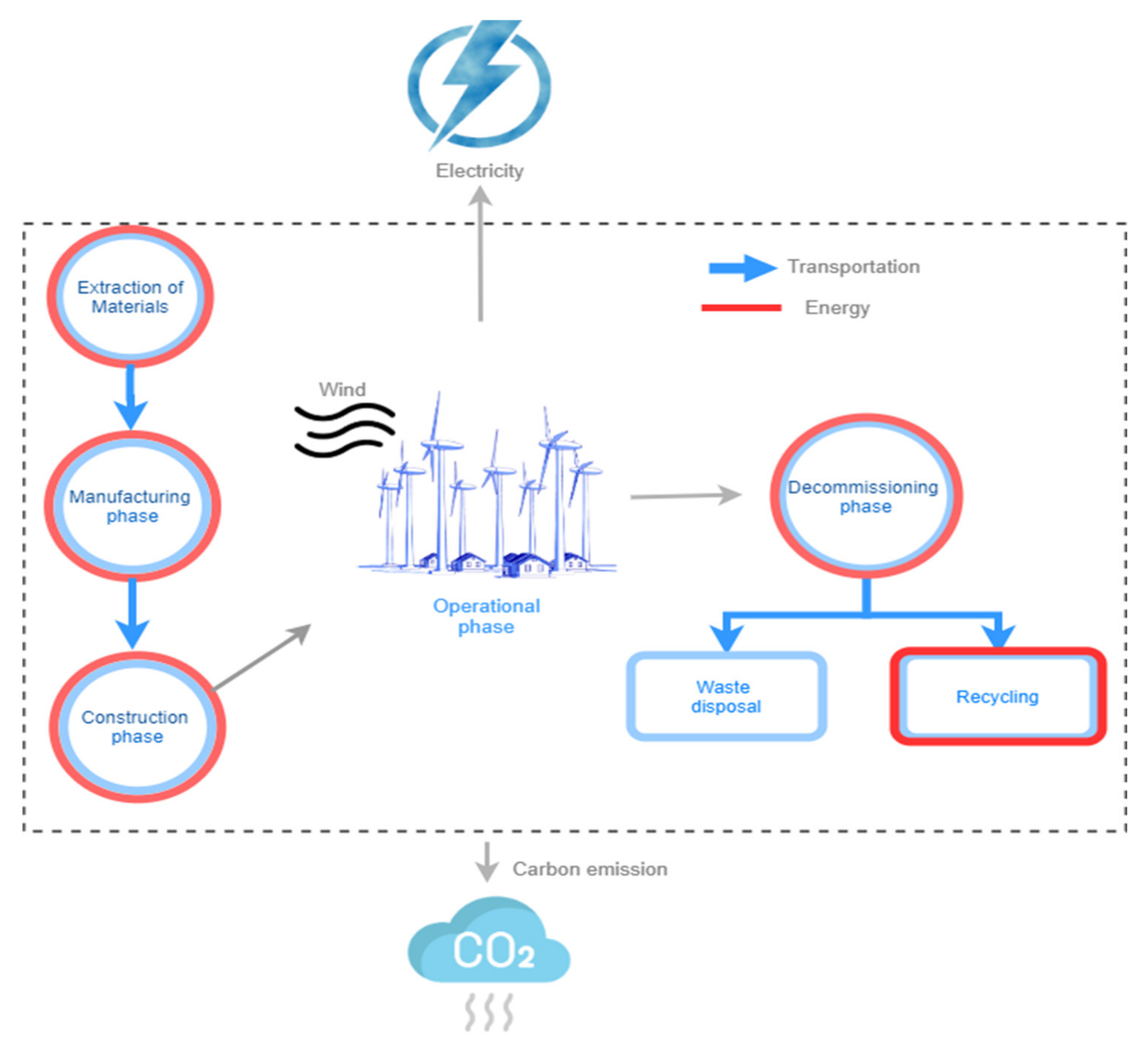

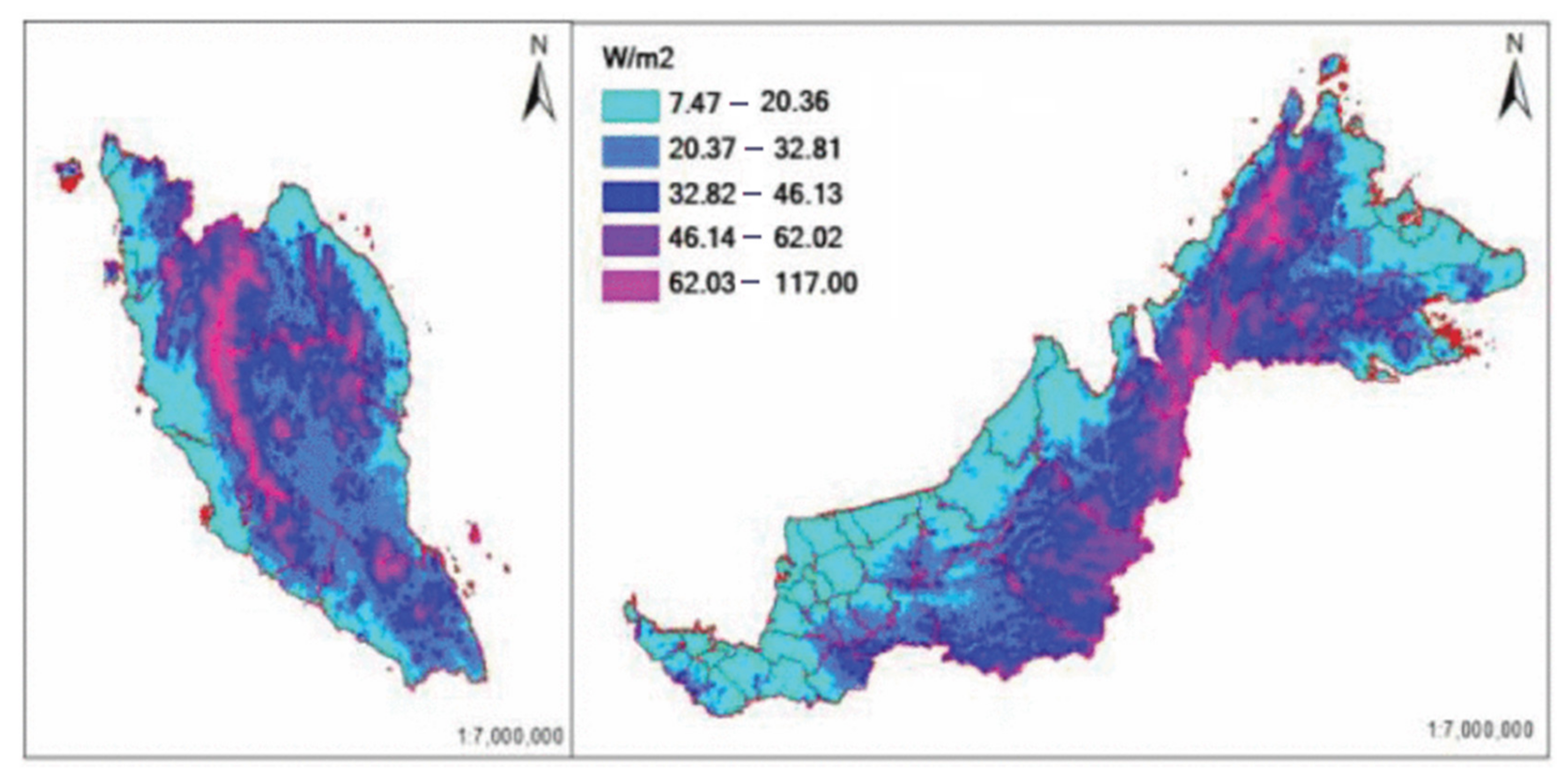
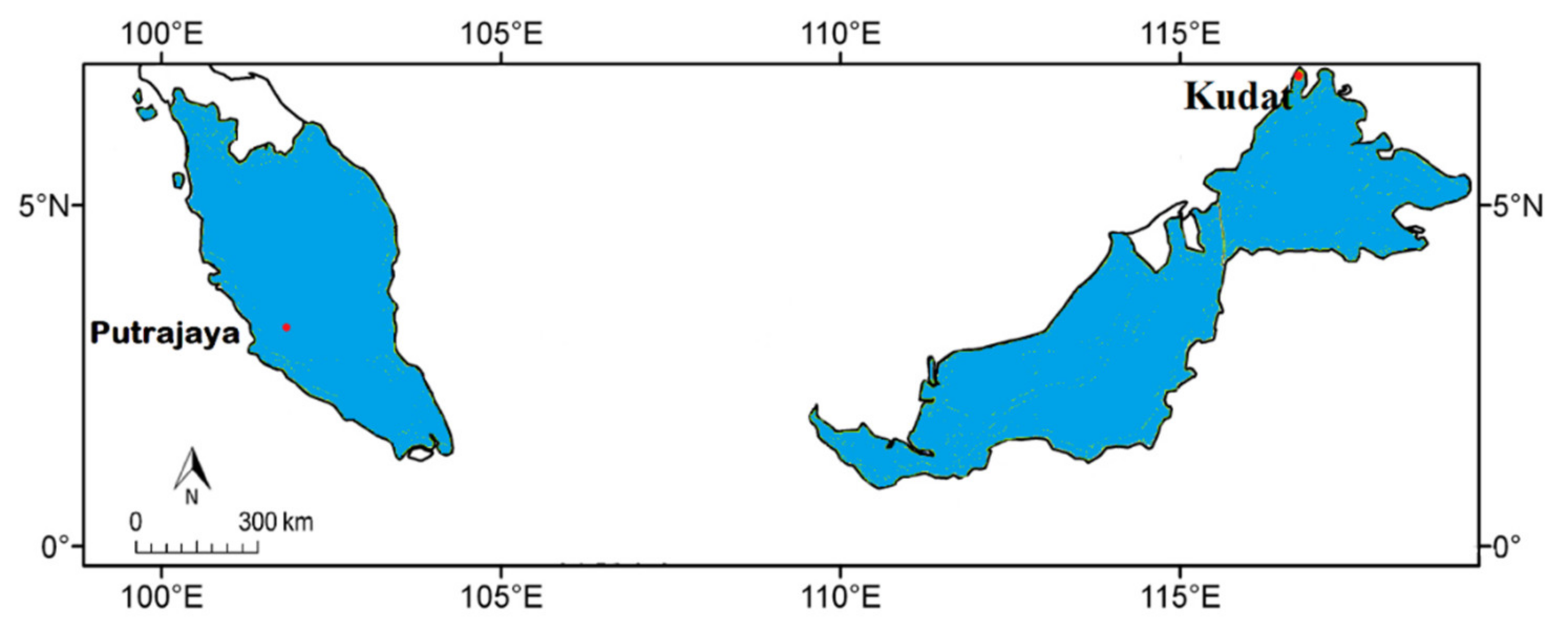
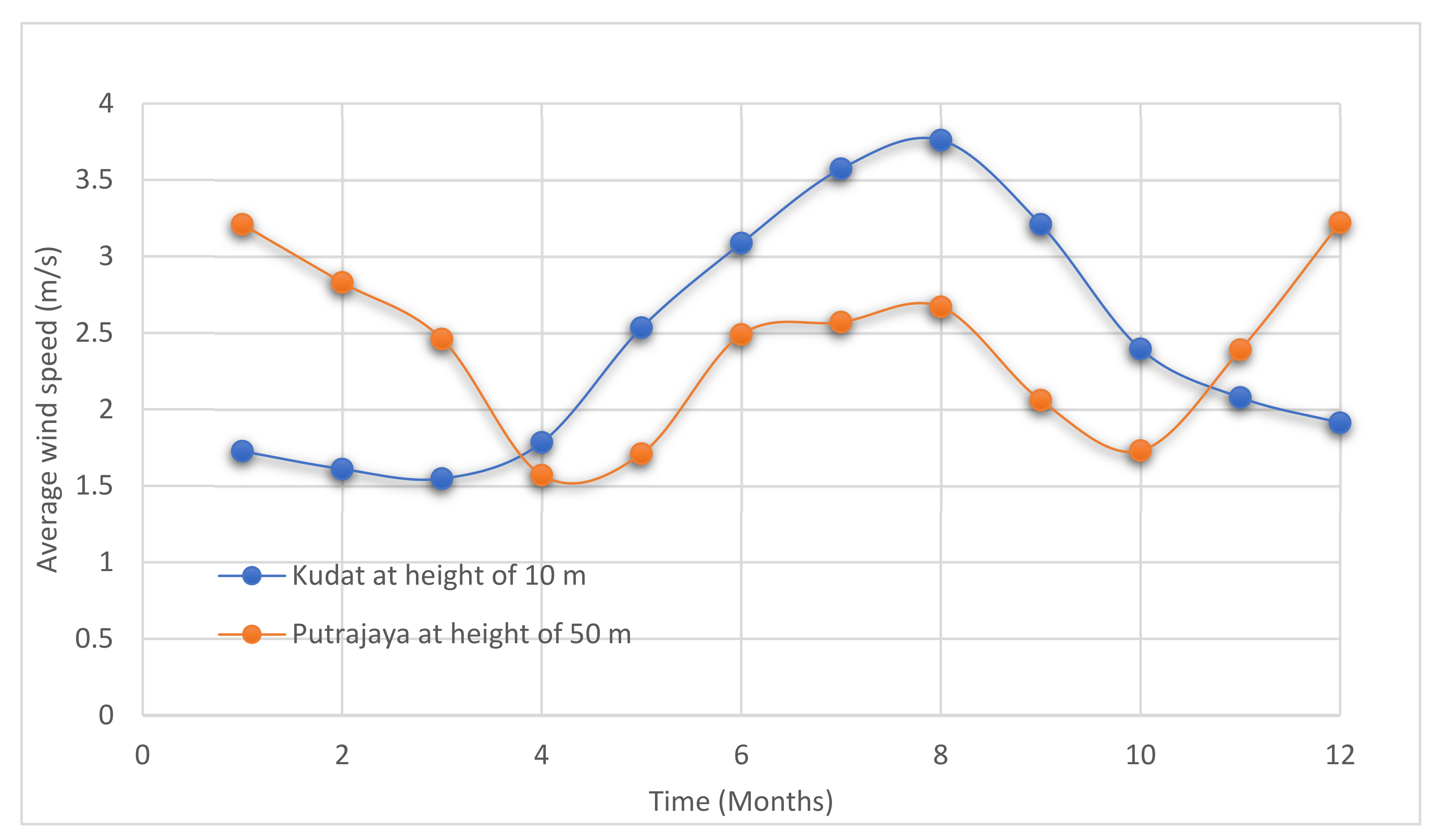
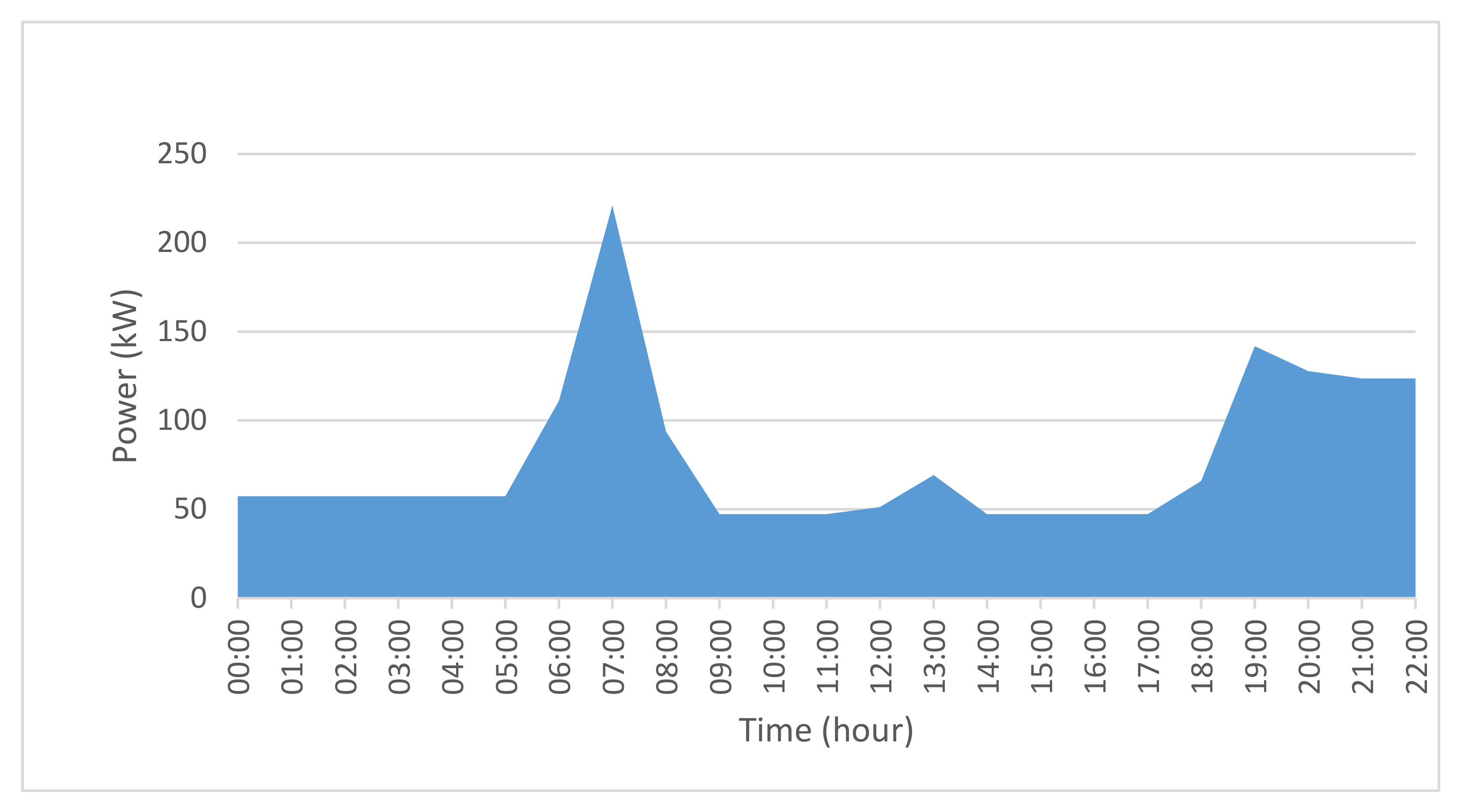
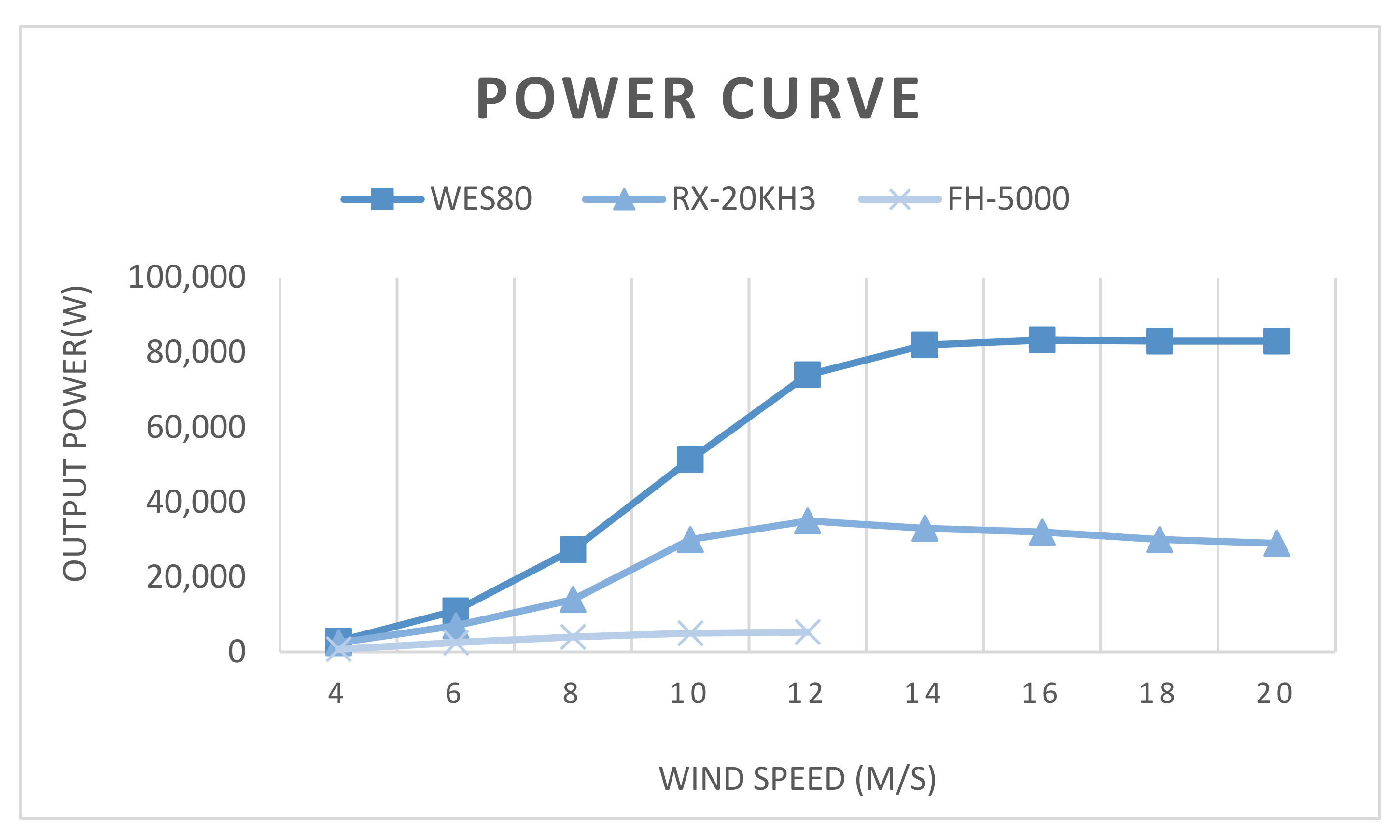
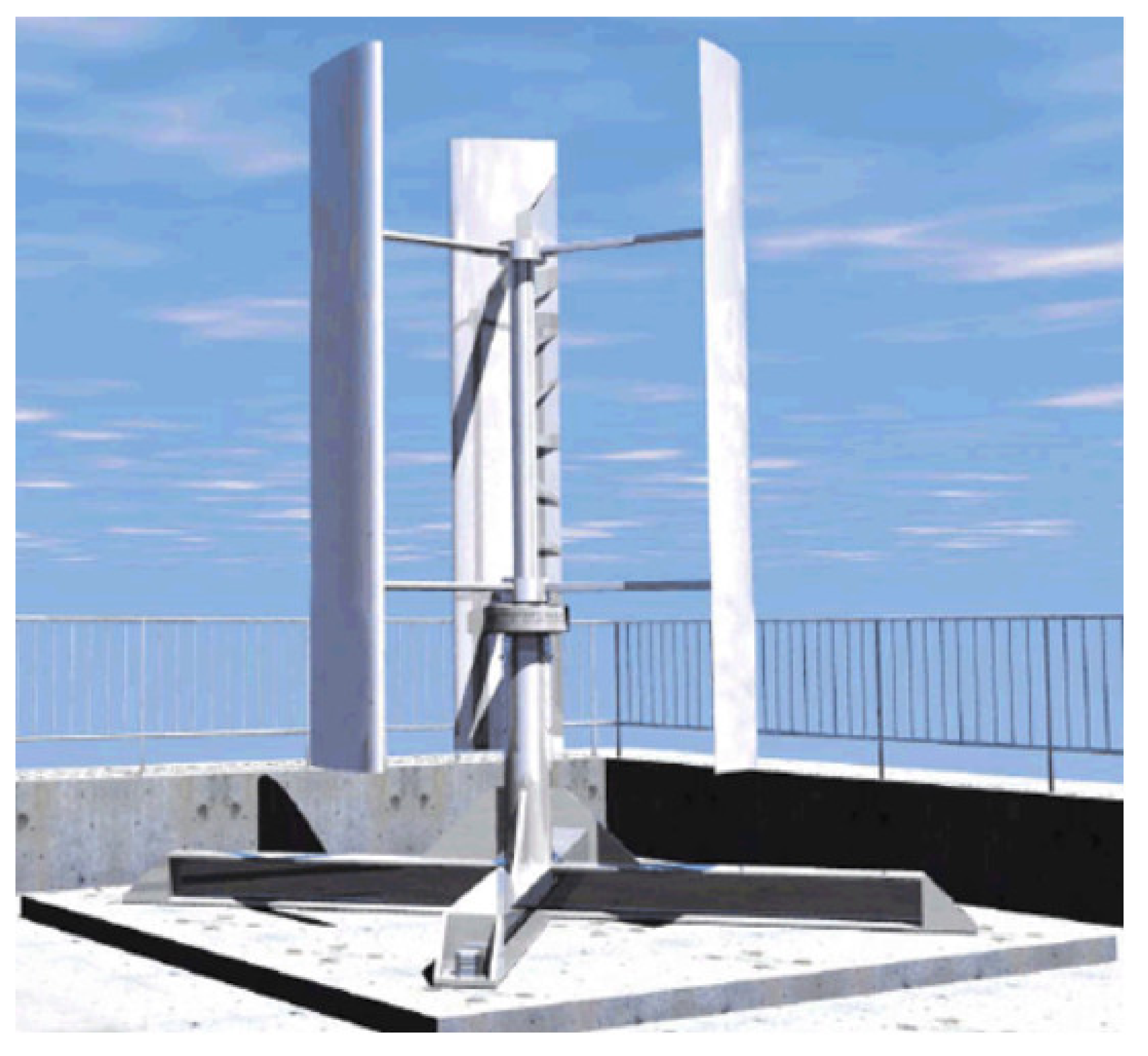




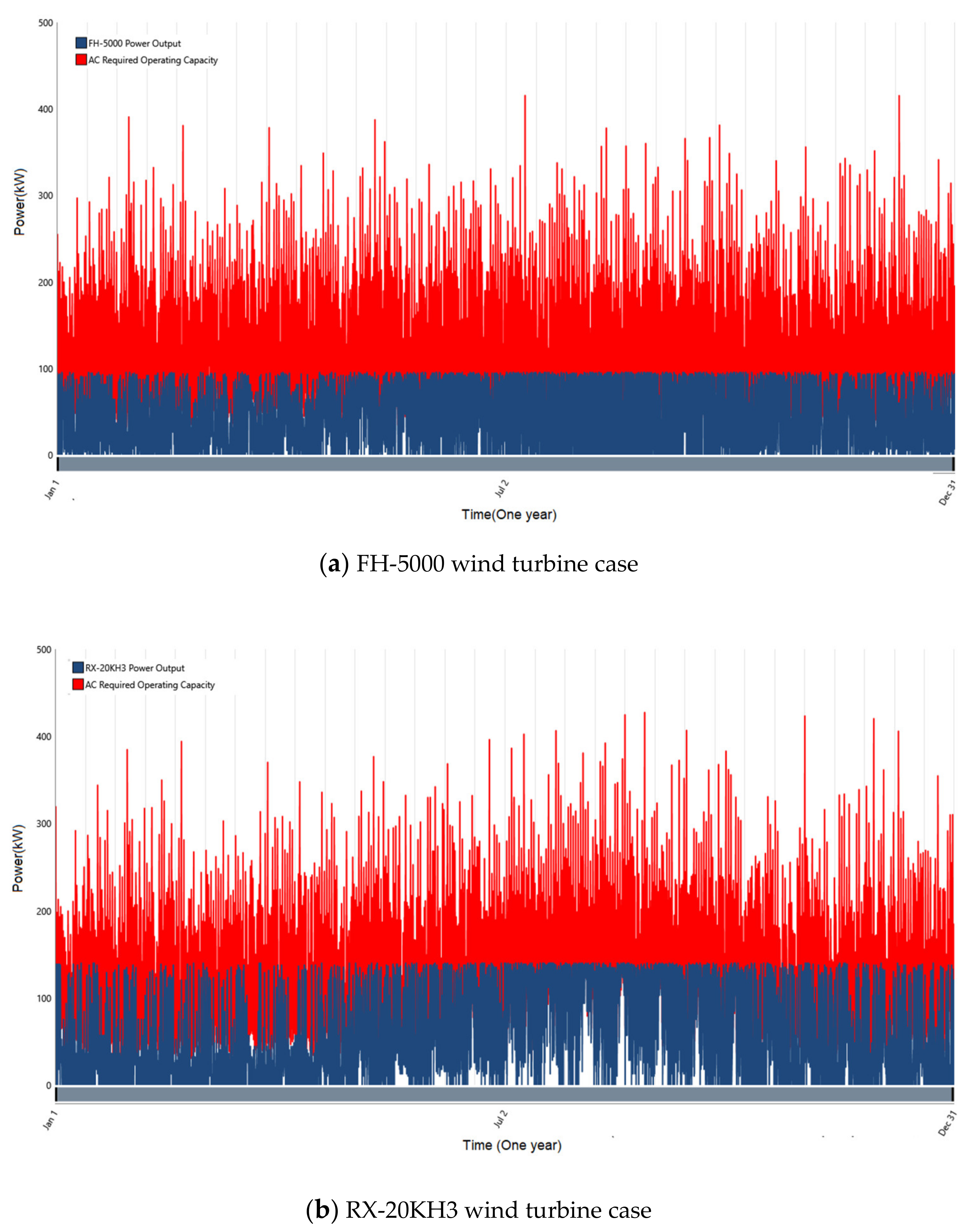
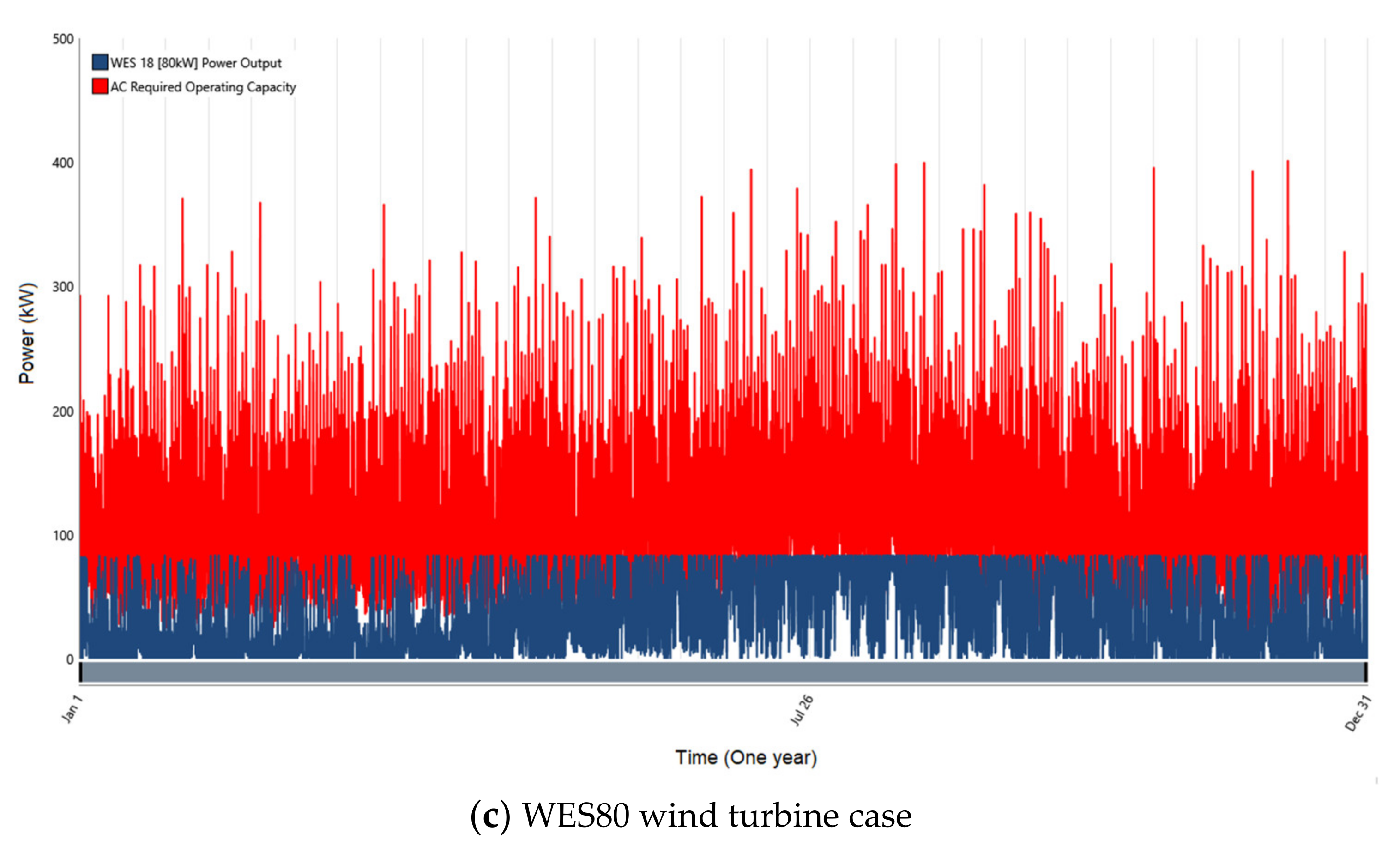



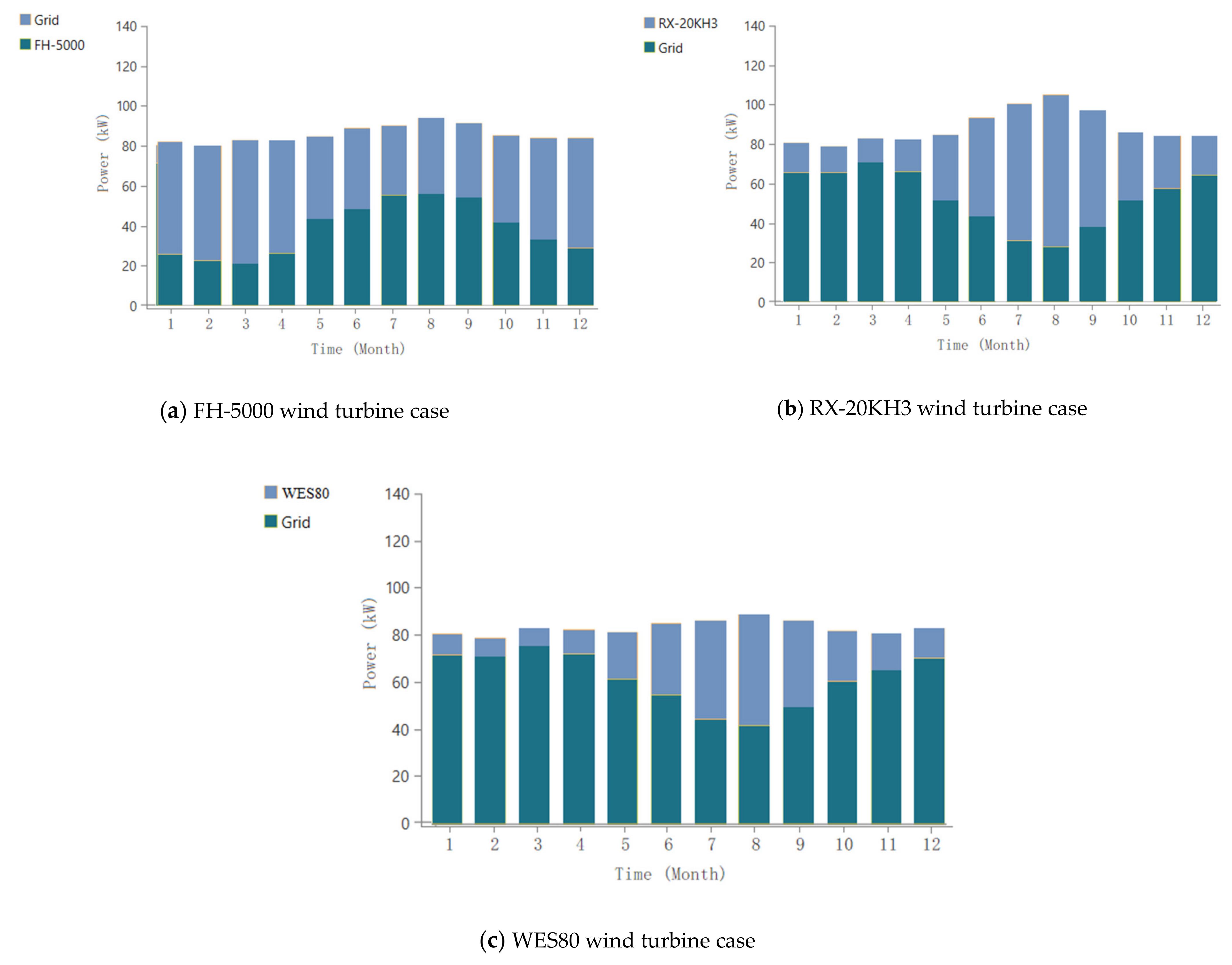
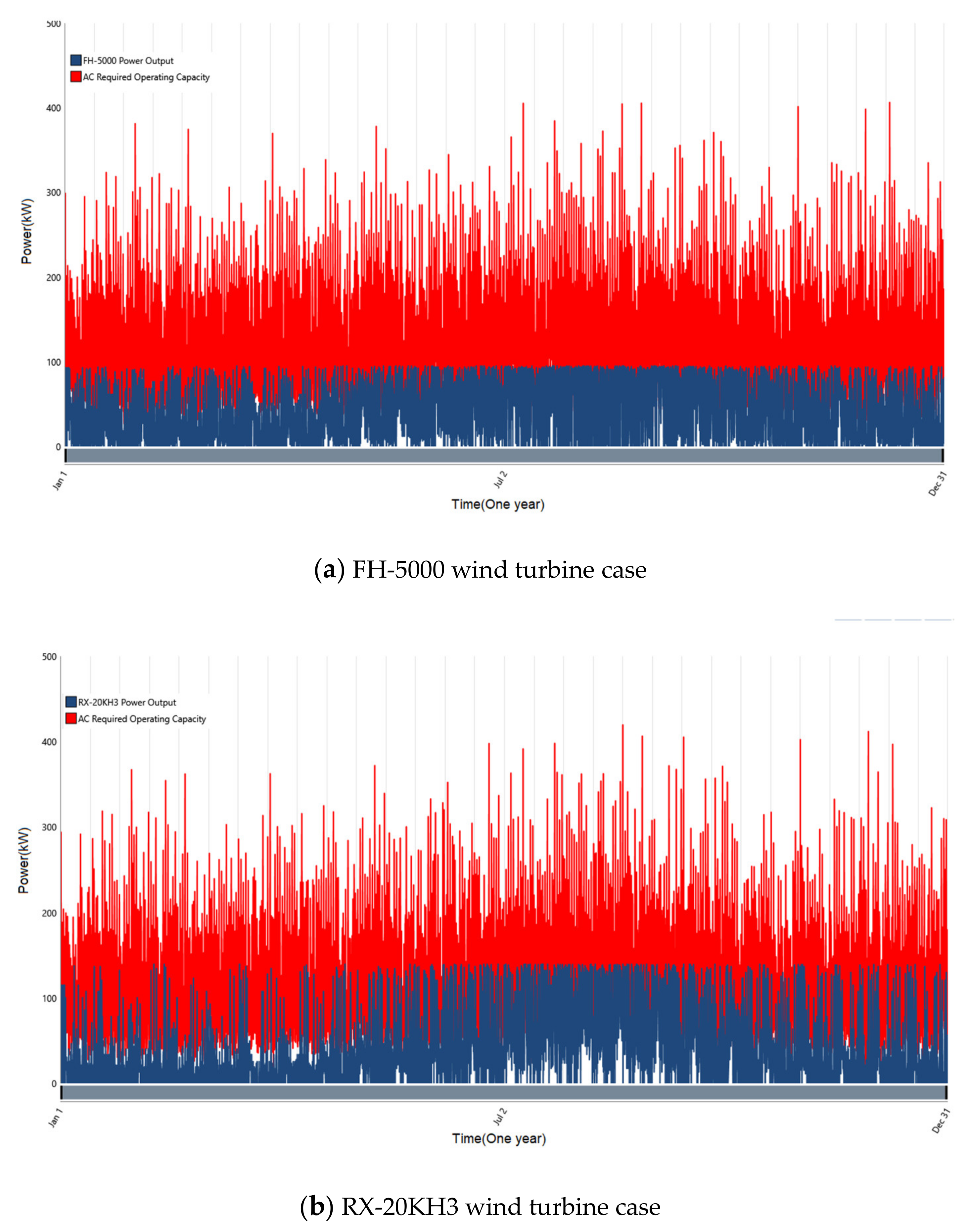

| Model | FH-5000 | RX-20KH3 | WES80 |
|---|---|---|---|
| Capital (USD) | 7237 | 17,073 | 190,243 |
| Operation & Maintenance (USD/Year) | 217 | 512 | 5707 |
| Replacement (USD) | 5212 | 14,634 | 48,780 |
| Lifetime (Year) | 20 | 20 | 20 |
| Location | Kudat | Putrajaya |
|---|---|---|
| Grid (USD) | 259,241 | 259,241 |
| FH-5000 (USD) | 225,973 | 227,195 |
| RX-20KH3 (USD) | 130,283 | 186,166 |
| WES80 (USD) | 341,463 | 375,609 |
Publisher’s Note: MDPI stays neutral with regard to jurisdictional claims in published maps and institutional affiliations. |
© 2021 by the authors. Licensee MDPI, Basel, Switzerland. This article is an open access article distributed under the terms and conditions of the Creative Commons Attribution (CC BY) license (https://creativecommons.org/licenses/by/4.0/).
Share and Cite
Alkawsi, G.; Baashar, Y.; Alkahtani, A.A.; Lim, C.W.; Tiong, S.K.; Khudari, M. Viability Assessment of Small-Scale On-Grid Wind Energy Generator for Households in Malaysia. Energies 2021, 14, 3391. https://doi.org/10.3390/en14123391
Alkawsi G, Baashar Y, Alkahtani AA, Lim CW, Tiong SK, Khudari M. Viability Assessment of Small-Scale On-Grid Wind Energy Generator for Households in Malaysia. Energies. 2021; 14(12):3391. https://doi.org/10.3390/en14123391
Chicago/Turabian StyleAlkawsi, Gamal, Yahia Baashar, Ammar Ahmed Alkahtani, Chin Wai Lim, Sieh Kiong Tiong, and Mohammad Khudari. 2021. "Viability Assessment of Small-Scale On-Grid Wind Energy Generator for Households in Malaysia" Energies 14, no. 12: 3391. https://doi.org/10.3390/en14123391
APA StyleAlkawsi, G., Baashar, Y., Alkahtani, A. A., Lim, C. W., Tiong, S. K., & Khudari, M. (2021). Viability Assessment of Small-Scale On-Grid Wind Energy Generator for Households in Malaysia. Energies, 14(12), 3391. https://doi.org/10.3390/en14123391







